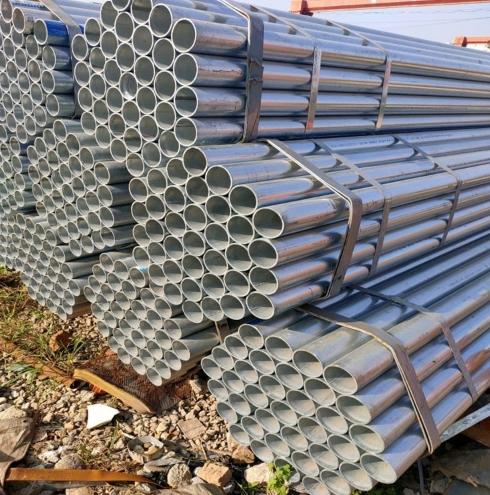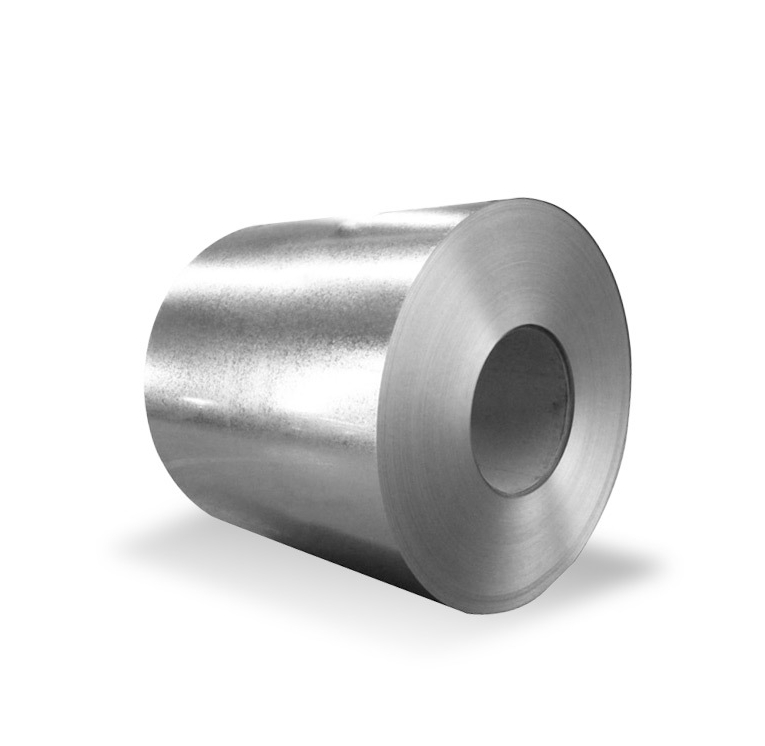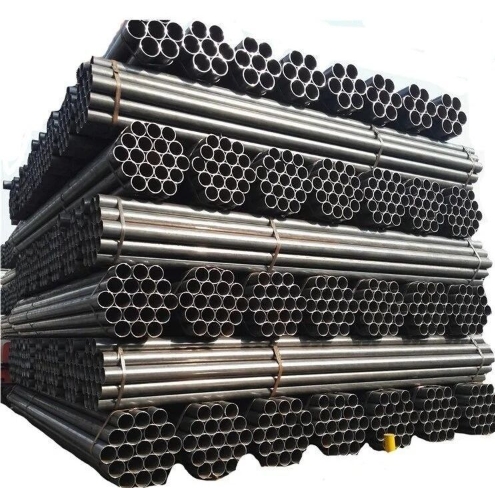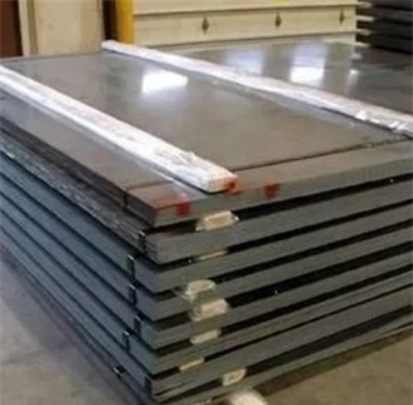For most pressure-vessel applications we do not recommend A588 (weathering/CORTEN) coil as a primary pressure-containing material. A588 is a high-strength, atmospheric-corrosion-resistant structural steel with excellent exterior performance, but the industry standard steels for welded pressure vessels remain ASME/ASTM PVQ grades such as SA-516/A516 and ASME SA-387 for higher-temperature or alloyed service. If your application specifically requires weathering properties in a low-pressure non-containment assembly, A588 coils can be a cost-effective option; however, for welded boilers, heat exchangers, and high-pressure tanks you should select dedicated pressure-vessel grades and follow code requirements.
What is ASTM A588?
A588 is the ASTM specification for a high-strength, low-alloy structural steel that includes atmospheric corrosion resistance (commonly known to industry as weathering steel or CORTEN® family). The standard covers shapes, plates, and bars with a minimum yield up to roughly 50 ksi (345 MPa) and an alloy chemistry that promotes a stable protective patina in many outdoor environments. It was developed for long life without paint in exposed structural applications, not primarily for pressure-containing vessels.
Chemical and mechanical characteristics
A588 contains small additions of copper, chromium, phosphorus and nickel among other elements. These promote controlled surface oxidation that forms a compact, adherent layer which substantially slows further uniform corrosion in many atmospheric environments. Typical mechanical features include higher yield and tensile strength relative to common structural carbon steel, plus satisfactory toughness and weldability for standard structural joins.
Two practical consequences:
-
The protective rust layer reduces maintenance painting in the right exposure conditions.
-
The alloy is not inherently corrosion-proof — trapped moisture, splashing, or chloride-rich atmospheres (coastal, chemical plants) can still cause aggressive corrosion unless engineered details prevent water retention.
Typical product forms and coils: what to expect on a quotation
A588 is manufactured in plate, sheet, and coil forms. Coil products are usually hot-rolled (sometimes cold-finished if required), and common commercial coil widths are 1000–1600 mm with thicknesses typically from 1.5 mm upward depending on the mill’s capability.
When you request a CORTEN/A588 coil quotation you should confirm:
-
Exact grade (A588 has grades and equivalents; A242/A606 are related weathering grades)
-
Coil width and thickness tolerance
-
Surface finish (hot-rolled, pickled, oiled) and whether mill-scale is retained (important for patina behavior)
-
Mill test certificate (MTC) and any Charpy impact or additional mechanical requirements required by your fabricator
Suppliers often sell both A588 sheet & coils; however, coil availability and MOQ vary by mill, so competitive international sourcing can materially affect landed price and lead time.

Pressure-vessel suitability — the practical metallurgy and code angle
Pressure-vessel applications have special metallurgical, toughness and code requirements:
-
PVQ requirements: Pressure vessel steels are frequently produced to PVQ (pressure vessel quality) standards that control sulfur, phosphorus, hydrogen-induced cracking risk, and specify Charpy toughness testing, grain practices, and sometimes heat treatment. Grades like ASME SA-516 (A516) and SA-387 are formulated for predictable behavior in welded pressure-containing structures.
-
A588 limitations for PV: A588 was developed for structural exposure and atmospheric corrosion resistance, not for internal pressure containment or cyclic pressure service where code certification (ASME Section II/Section VIII) and specific PVQ properties are mandatory. If the vessel design code or the end-user mandate requires A516/SA-516 or another ASME-listed grade, substituting A588 could cause code noncompliance and safety risk.
Practical rule: use A588 for structural, architectural, or non-pressurized weathering parts; use A516/SA-516 or the recognized PV grades for welded pressure vessels and ensure the material certificates and tests match the applicable code.
Comparison: A588 versus the common pressure-vessel steels
Short comparison points:
-
A588 (weathering structural steel): high yield, designed to form protective patina, intended for bridges, buildings, facades. Good weldability for structural joins but not optimized as PVQ material.
-
A516 / ASME SA-516 (PVQ carbon steel): classic choice for welded pressure vessels, selected for ductility, notch toughness, and consistent chemical control. Widely specified in refineries, boilers, and chemical plants.
-
A387 (ASME SA-387) (alloy steel PV): for elevated temperature or higher strength alloyed service (Cr-Mo steels). Used where higher creep/temperature performance is required.
Designers should base material selection on service conditions (pressure, temperature, corrosiveness), applicable code/contract wording, weldability and fabrication requirements, not just on dollar-per-ton cost.
Welding, forming, and fabrication notes for coils that will become curved shells
Coils are attractive for forming cylindrical shells because they can be roll-formed and seam-welded with fewer plate welds. For A588 or any coil turned into pressure equipment:
-
Ensure weld procedure qualification (WPS/PQR) matches the target standard.
-
Check if post-weld heat treatment (PWHT) is required for the chosen PV grade; A588 structural joins typically do not require PWHT, but PV applications sometimes do.
-
Control hydrogen and preheat for thick sections or low temperatures.
-
Require full mill test certificates and, where needed, Charpy impact records.
If you intend to use A588 coil in a non-PV atmospheric tank that will be fabricated into a curved shell, confirm the fabricator’s experience with weathering steels to avoid trapped pockets where water could accumulate and defeat the patina protection.
2025 market snapshot — what moved the coil price this year?
The steel market in 2025 saw several drivers that affected coil prices globally: regional tariff actions and trade policy, seasonal demand cycles, mill production adjustments, and raw-material cost swings (scrap, iron ore). Hot-rolled coil base prices in mid-2025 showed notable regional divergence — North American HRC base levels sat near the high hundreds USD per tonne, while China domestic base prices were substantially lower in many periods. Meanwhile, specialized weathering (CORTEN) coil quotes in China were often reported in the mid-hundreds USD/ton range depending on thickness and width. These regional splits create buying opportunities for international procurement when logistics and duties permit.
Global price comparison — 2025 (typical ranges)
Below we present a concise price comparison that reflects mid-2025 market signals. These are indicative landed/spot ranges — use them for ballpark budgeting only. Always request an up-to-date commercial quote with INCOTERMS, payment terms, and MTC.
Global coil/plate price (USD per metric tonne) — mid-2025 indicative
| Region / product | Typical price range (USD/ton) | Notes |
|---|---|---|
| United States — Hot-Rolled Coil (HRC) | ~$880–$975 / t | Domestic base prices and posted mill levels in mid-2025 were in this band for HRC. |
| Western Europe — Hot-Rolled Coil | ~$630–$700 / t | European HRC generally traded lower than North America in mid-2025; regional dynamics vary. |
| China — Hot-Rolled Coil (domestic) | ~$350–$400 / t | China domestic HRC benchmarks were materially lower in 2025, creating export competitiveness. |
| World export (HRC benchmark) | ~$430–$480 / t | World export reference prices fluctuate with scrap and seaborne flows. |
| China — ASTM Corten / A588 coil (specific quotes) | ~$660–$700 / t | Example spot quotes for Corten (A588/A242) coils were reported around USD 667–677/ton in June 2025 for common sizes — subject to MOQ and mill. |
How to interpret the table: standard HRC commodity ranges differ from specialty weathering coil quotes. A588/CORTEN coils usually carry a premium over commodity HRC in China because of alloying and processing control, yet their domestic price can still sit below Western domestic HRC due to lower local production costs and different demand patterns.
Practical procurement: how to read a 2025 quote for A588 coils
When you receive a quotation, check the following line items:
-
Material grade & standard — e.g., “ASTM A588/A588M-19, Grade A” (ensure year/version).
-
Dimensions — thickness × width × coil weight and tolerance.
-
Surface treatment — mill scale, oiled, pickled, or pre-treated (this changes patina behavior).
-
Mill test certificate — MTC to EN 10204 3.1 / 3.2 or equivalent.
-
Mechanical test specifics — Charpy impact if required.
-
Packing and port of loading — inland transport, bundling, seaworthy packing.
-
Delivery terms (INCOTERMS) — EXW, FOB, CIF etc. CIF includes shipping and is often easy for buyers without logistics.
-
MOQ and lead time — coils often have mill MOQ (e.g., 2–5 tonnes) and lead times depend on stock vs mill production.
-
Warranty and liability — confirm the supplier’s position on non-conformance and rejection.
A well-written commercial offer reduces negotiation time and prevents technical rework during fabrication.
Why Luokaiwei (our company) is a strong partner for A588 / Corten coil procurement
We are a Chinese manufacturer and exporter specializing in ferrous coil and plate products with long experience supplying international fabricators. When you work with Luokaiwei you gain these practical advantages:
-
100% factory pricing — we supply direct from the mill or our bonded inventory which removes middleman margins.
-
Custom services — we can cut, slit and tailor coils to your exact width, thickness and edge requirements before shipment.
-
Fast delivery for stocked items — for standard sizes we keep ready inventory to shorten lead time.
-
Full documentation and testing — MTCs issued as required (EN / ASTM formats) and optional Charpy testing upon request.
-
Export experience — we handle CIF/FOB shipments, supply chain packaging, and compliance documentation for global destinations.
Engineering checklist before accepting A588 coil for any vessel or tank work
If you are considering A588 for any vessel or tank, make sure to:
-
Confirm the design code: ASME Section VIII, PED (EU), or local code. Material must be permitted by the code.
-
Verify weld procedures and PQRs are appropriate for the alloy and thickness.
-
Assess service environment: chloride exposure, marine spray, long-term water immersion, or chemical atmospheres may eliminate the benefit of weathering steels.
-
Require MTC and Charpy records if low-temperature toughness might be a concern.
-
Check drainage and detail design to prevent water retention on weathering surfaces. Without good drainage the patina will not stabilize and corrosion risk increases.
Standards, test methods and authoritative documents to require
When buying A588 or specifying PV steels, insist on clear reference to standards and test methods. Key documents include:
-
ASTM A588 / A588M — specification for high-strength low-alloy structural steel with atmospheric corrosion resistance (the authoritative standard for A588).
-
ASME SA-516 / ASTM A516 — pressure vessel carbon steel plates (common PVQ standard).
-
EN / ISO equivalents — where applicable, request EN standard equivalents and 3.1/3.2 test reports.
-
Mill Test Certificates (EN 10204) — 3.1 or 3.2 type per buyer-requirement.
-
Corrosion test references — when patina behavior matters, consult corrosion indices and local performance reports (NACE or national corrosion data).
Require these documents in the purchase order and as pre-shipment deliverables.
FAQs
Q1 — Can I use A588 coil for a horizontal storage tank that holds non-corrosive water at low pressure?
A: Possibly — if the tank is atmospheric or low-pressure and design codes do not mandate PVQ grade. However ensure tank design prevents standing water, provide appropriate drainage, and confirm weld practices. If code or client demands SA-516 or specific PVQ, choose that instead.
Q2 — How much more does A588 cost versus commodity HRC in 2025?
A: Pricing varies by region and mill, but in mid-2025 CORTEN/A588 coil quotes in China were reported in the mid-$600s per tonne while commodity HRC domestic benchmarks could be significantly lower (China HRC domestic benchmarks were in the low hundreds USD/ton). That said, landed Western domestic prices are higher than both. Always request a current factory quote.
Q3 — If I must have corrosion resistance and pressure containment, what is the practical approach?
A: Use a PVQ grade (e.g., A516/SA-516) and apply an appropriate corrosion protection system (paint, linings, internal coatings, or stainless cladding) designed for the fluid service and operating temperature. Weathering steels and PVQ steels address different priorities.
Q4 — What inspection and certificates should I insist on when buying A588 coils?
A: 3.1 or 3.2 mill test certificates, material heat numbers traceable to test reports, chemical and mechanical test results, and optional Charpy tests. For export shipments, insist on visible coil ID tags and photos of packing.
Q5 — How does Luokaiwei handle customization requests (slitting, cutting, edge prep)?
A: We offer slitting to exact widths, edge conditioning, and controlled coil weights. For coated or pre-treated surfaces we can coordinate with partner mills to meet the required surface finish for patina or painting behavior. Contact commercial to specify slitting tolerances and MTC format.








